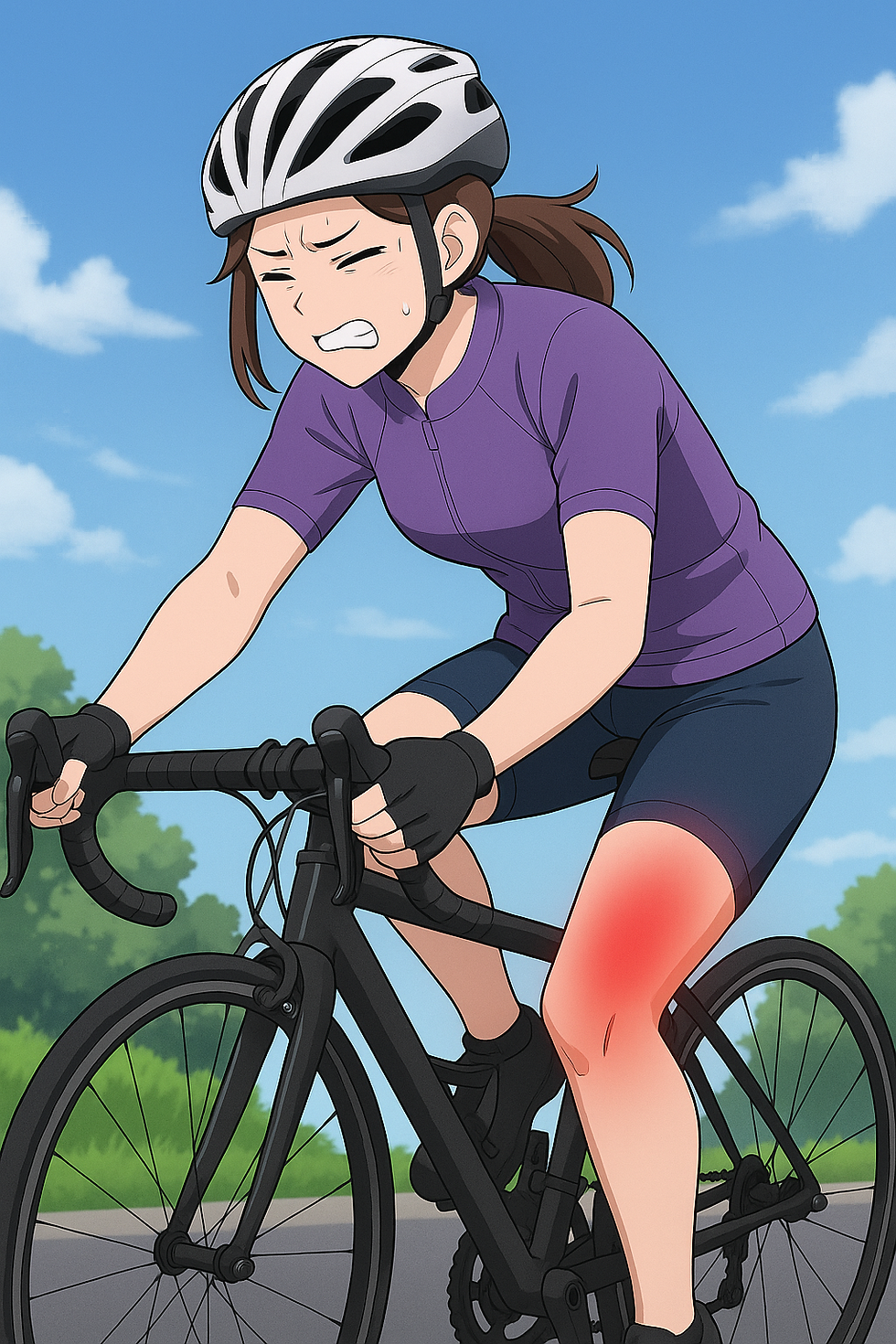Leg Pain Focus: IT Band Syndrome
- MiRae Acu
- Aug 25
- 4 min read

Iliotibial Band (IT Band) Syndrome is a common cause of pain along the outer side of the knee and thigh, especially in runners, cyclists, and athletes. The IT band is a thick band of connective tissue that runs from the hip to just below the knee, helping stabilize the leg during movement. When it becomes tight or irritated, it can rub against the outer knee, leading to sharp, aching, or burning pain that interferes with activity.
What Sets IT Band Syndrome Apart
The IT band itself doesn’t contract like a muscle — instead, it acts as a stabilizer. Irritation usually occurs where it crosses the lateral femoral condyle (outer knee). Overuse, poor biomechanics, or repetitive stress can cause friction and inflammation, making each step or pedal stroke painful.
Common contributing factors include:
Repetitive Activity: Long-distance running, cycling, or hiking with repetitive knee bending and straightening.
Tight Hip Muscles: Particularly the tensor fasciae latae (TFL) and gluteus maximus, which connect directly into the IT band.
Weak Gluteal Muscles: Insufficient hip stabilization shifts more stress onto the IT band.
Improper Training Habits: Sudden increase in mileage, running on slanted roads, or inadequate warm-up.
Biomechanical Issues: Leg-length discrepancies, overpronation of the foot, or poor gait mechanics.
Clues Your IT Band May Be the Culprit
IT Band Syndrome typically develops gradually, with pain worsening during or after repetitive activity.
Typical signs include:
Outer Knee Pain: Sharp, burning, or aching pain felt on the outside of the knee, often about an inch above the joint.
Pain During Activity: Symptoms worsen with running, cycling, stair climbing, or squatting.
Tenderness to Touch: Soreness along the outer thigh or knee when pressed.
Snapping Sensation: Some may feel the IT band “snap” over the outer knee with movement.
Reduced Endurance: Pain that forces early stopping during workouts.
An East Asian Medicine Lens
From an East Asian Medicine perspective, IT Band Syndrome reflects an imbalance in the body’s circulation of Qi (vital energy) and Blood through the muscles and connective tissues along the outer leg. When this flow is disrupted by overuse, tightness, or strain, the result is pain, tension, and reduced mobility.
Common patterns that may appear include:
Qi and Blood Stagnation: Repetitive stress creates blockages, leading to sharp, localized pain and stiffness.
Damp-Heat Accumulation: Inflammatory processes may show up as burning discomfort, swelling, or a sense of heaviness in the leg.
Underlying Deficiency: Weakened support of the tendons and connective tissue makes recovery slower and recurrence more likely.
Treatment in this framework goes beyond addressing the local irritation. The aim is to:
Restore smooth circulation of Qi and Blood to relieve pain and promote healing.
Relax tension in the surrounding muscles and tissues to improve mobility.
Strengthen the body’s foundation to support tendon and ligament health and prevent future flare-ups.
Our Integrative Care Strategy
At Mi Rae Acupuncture, we take a comprehensive approach to IT Band Syndrome that addresses both the local irritation and the underlying contributing factors. Each treatment plan is tailored to your symptoms, activity level, and goals — whether you’re looking to return to running, cycling, or simply walking without pain.
Our treatment options may include:
Acupuncture Therapy: Reduces pain and inflammation, relaxes tight muscles, and restores healthy circulation to the outer thigh and knee.
Massage Therapy: Targets tension in the IT band, hip, and glute muscles to improve flexibility and restore balance across the leg.
Electroacupuncture or Cold Laser Therapy: Enhances tissue repair and reduces irritation, supporting faster recovery.
Cupping or Moxibustion: Applied when appropriate to loosen tight tissues, improve blood flow, and ease stiffness.
Herbal Medicine: Formulas may be prescribed to improve circulation, clear lingering inflammation, and strengthen tendons and ligaments.
Injection Therapy (for persistent or severe cases): Used selectively to support healing and reduce pain when standard approaches are not enough.
By combining these therapies, our goal is not just temporary relief, but lasting improvement in mobility, comfort, and resilience.
Everyday Adjustments That Make a Difference
In addition to in-clinic treatments, these self-care practices can help manage IT Band Syndrome and reduce recurrence:
Rest and Modify Activity: Temporarily cut back on running or cycling until pain improves.
Ice After Activity: Applying ice to the outer knee for 10–15 minutes can reduce irritation after exercise.
Stretch the IT Band and Hips: Gentle stretches for the outer thigh, glutes, and hip flexors help reduce tension.
Strengthen the Glutes: Exercises like clamshells, side leg raises, and bridges improve hip stability and reduce strain on the IT band.
Check Training Habits: Avoid sudden increases in mileage, vary running surfaces, and replace worn-out shoes.
Foam Rolling: Regular foam rolling along the outer thigh can improve mobility and prevent tightness.
Moving Forward with Confidence
IT Band Syndrome can be frustrating, especially when it interferes with running, cycling, or daily activities. With the right care and support, recovery is within reach. At Mi Rae Acupuncture, our goal is to help you move comfortably again and prevent setbacks, so you can return to the activities you enjoy with confidence.
Reach out today to start a personalized treatment plan and move forward — without the limits of IT band pain.


